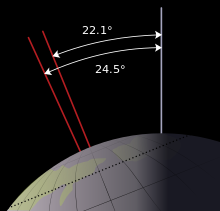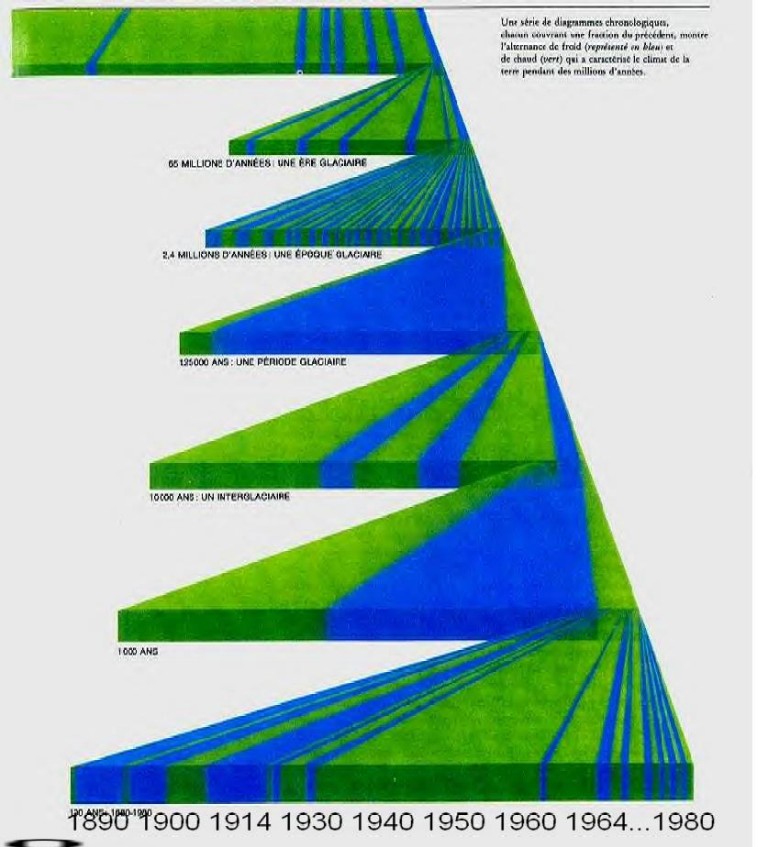Bintz Pierre, Bocquet Aimé, Borel Jean-Luc, Olive Philippe. Tableau diachronique de l’Holocène et du Tardiglaciaire dans les Alpes du Nord et leur piémont. In: Bulletin de la Société préhistorique française. 1989, tome 86, N. 2. pp. 51-60. (November2011)
Les Glaciers à l’épreuve du climat, IRD Editions - Editions Belin, 2007. (October 2011)
Academy of grenoble (2011)
Mountain vegetation http://www.crdp.ac-grenoble.fr/cfm/textes/paysages3.pdf (October2011)
Alparc
protected areas http://fr.alparc.org/les-espaces-proteges/les-epa-en-chiffres (November 2011)
Archives ouvertes
Jeanne Baudin thesis on "Observed changes in mountain vegetation of the Alps during the XXth century - Role of climate and land-use changes" (2010) http://hal.archives-ouvertes.fr/docs/00/59/21/44/PDF/Manuscrit_thA_se_Jeanne_Bodin.pdf (October 2011)
Daylimotion / maxiscience (January 2009)
Video on Climate change in the Alps http://www.maxisciences.com/glacier/recul-des-glaciers-un-reportage-sur-les-consequences-du-changement-climatique_art642.html
ENS Lyon
Milankovic cycles http://planet-terre.ens-lyon.fr/planetterre/XML/db/planetterre/metadata/LOM-milankovitch-2005-09-27.xml (December 2011)
Geos 3000
Glaciers risks http://geos3000.free.fr/glacier_risk.htm (October 2011)
Glaciers climat (2004)
Milankovic cycles http://www.glaciers-climat.fr/Glaciations_1/Periodes_glaciaires.html (October 2011)
Causes of glaciations http://www.glaciers-climat.com/les-causes-des-glaciations.html (October 2011)
Ina (2010)
Video on climate cycles http://www.ina.fr/sciences-et-techniques/sciences-humaines/video/CPD10001738/extrait-n3-cycles-climatiques.fr.html (December 2011)
Jean luc Voisin
Presentation on glaciation http://jeanlucvoisin.free.fr/pdfcours/Les%20glaciations.pdf (November 2011)
La cliamatologie (Climatology)
Climate Forecast and global warming http://la.climatologie.free.fr/rechauffement/rechauffement4.htm (October 2011)
Notre planète (2001-2011)
Several articles on the Alps http://www.notre-planete.info/actualites (October 2011)
Partenariat de la montagne (2008)
Threatened species http://www.partenariatmontagne.org/issues/climate.html (October 2011)
Paysages glaciaires/ glacial landscapes
Quaternary and glaciation http://paysagesglaciaires.net/site_source/Pages_2/2_Glaciations_quaternaires.html (November 2011)
Unifr (Mountain geomorphology)
Permafrost http://www.unifr.ch/geoscience/geographie/ssgmfiches/pergelisol/3109.php (October 2011)
Wikipedia (2011)
Glaciation and consequences http://fr.wikipedia.org/wiki/Glaciation#Les_cons.C3.A9quences_d.27une_glaciation (October 2011)
Glacier retreat http://fr.wikipedia.org/wiki/Recul_des_glaciers_depuis_1850 (October2011)
Grésivaudan valley http://fr.wikipedia.org/wiki/Gr%C3%A9sivaudan (November2011)
Milankovic cycles http://fr.wikipedia.org/wiki/param%c3%a8tres_de_milankovi%c4%87 (December 2011)
Youtube
http://www.youtube.com/watch?v=-p4CALvWjd0&feature=player_embedded
http://www.youtube.com/watch?v=5hr9QXqVMvg
http://www.youtube.com/watch?v=KVP29fHgMUM&feature=BFa&list=PLAB92F34D671CE2A7&lf=results_main
Are mountain areas in danger regarding to the global warming? Have they changed already? which were previous changes in the past?
lundi 19 décembre 2011
Would those changes be a a question of cycles?
According to Milankovic, climate change would be due to three main astronomical factors.
Those are the orbital shape, the ellipse formed by the Earth's orbit is more or less offset by the laws of the attraction of the planets with each other (Newton). the eccentricity varies from 0005 to 0058. This component varies over a period of 413,000 years and implications for the aphelion and perihelion.
The Axial tilt (obliquity) can vary from 22.1 24.2 ° in a cycle of about 41,000 years. Differences in tilt affect the amount of solar radiation received on land in summer and winter will be greater the tilt, the greater will be marked seasons (hot summers, cold winters) and vice versa. However, these changes are mainly felt at the poles because the equator where the obliquity has little influence, only the intensity of wet and dry seasons vary.
 Variation of earth obliquity (wikipedia,2011)
Variation of earth obliquity (wikipedia,2011)
The apsidal precession :During its rotation on itself, the earth is subject to the pull of the moon (nudation, tides) and the sun. Indeed, because of its "equatorial bulge", the earth does not turn itself on steadily but as a top. This has an influence on the indication of the terrestrial North Pole (a Usrae Minoris for the moment). During the rotation the "top" of the top will form a circle from the north celestial pole. the north-south axis is therefore a complete circle in 25,760 years.
the consequences are not specifically climate but it affects the precession of the equinoxes ie astronomically, winter is not always on December 21 and the astronomical seasons vary.

Those are the orbital shape, the ellipse formed by the Earth's orbit is more or less offset by the laws of the attraction of the planets with each other (Newton). the eccentricity varies from 0005 to 0058. This component varies over a period of 413,000 years and implications for the aphelion and perihelion.
On the right, maximum eccentricity, on the left minimum
(Wikipedia, 2011)
The Axial tilt (obliquity) can vary from 22.1 24.2 ° in a cycle of about 41,000 years. Differences in tilt affect the amount of solar radiation received on land in summer and winter will be greater the tilt, the greater will be marked seasons (hot summers, cold winters) and vice versa. However, these changes are mainly felt at the poles because the equator where the obliquity has little influence, only the intensity of wet and dry seasons vary.
 Variation of earth obliquity (wikipedia,2011)
Variation of earth obliquity (wikipedia,2011)The apsidal precession :During its rotation on itself, the earth is subject to the pull of the moon (nudation, tides) and the sun. Indeed, because of its "equatorial bulge", the earth does not turn itself on steadily but as a top. This has an influence on the indication of the terrestrial North Pole (a Usrae Minoris for the moment). During the rotation the "top" of the top will form a circle from the north celestial pole. the north-south axis is therefore a complete circle in 25,760 years.
the consequences are not specifically climate but it affects the precession of the equinoxes ie astronomically, winter is not always on December 21 and the astronomical seasons vary.
Precessions and seasons (Wikipedia, 2011)
Those factors have influences on climate when combined. The main influences are the amount of solar radIation on earth, the temperature of ocean and continents and hemisphere because of the albedo and glacial cycles as well.
Indeed glacial cycles are directly influenced by astronomical forcing. Each glacial period interspersed by warming period since. last 4.5 billion years have been throught by seven ice ages even cut into warming period and ice ages.

Ice ages and warming period since the earth creation (Glaciers-climat)
So, this raises the question of liability with respect to climate change, those that occurred in the past and those we are currently experiencing. In my opinion human beings are mainly responsible of current climate changes trying to control and utilize nature at the maximum. First recordedclimate change have indeed been observed in the late würm and early holocene period. As we seen before it was the start of anthropocene and it never stopped since then. Although natural cycle have imporant consequences, human beings aggravte them and the Alps and other sensitive areas could change irreversibly in the comming decades.
dimanche 4 décembre 2011
Global warming and ski resorts

Due to current global warming, ski resorts are endangered and with it all the winter tourism industry. Indeed, ski season are becoming shorter and shorter and snow falls lower and lower. Ski resorts above 1800m could be saved for a while but low altitude resorts (below 1500- 1600m) are directly touched by climate change. Last year some of them had to close a month earlier because of the lack of snow and warm temperature Ski resorts have to face with this climate change offering other activities in ski resorts like hiking, sledge, etc.
However, there is a huge paradox about this purpose. Ski resorts are endangered by global warming but they also contribute to global warming and climate change with tourism. Tourism and ski industry are an ecological disaster for the Alps and its resources. Tourism pumps an incredible amount of water for snow canons, water reservoirs and tourism needs.
Ski resorts and the Alps in general can't live without tourism income, it's the major activity in this area so they have to mitigate the effects of climate change. This is the reason why some actors of states, NGOs and tourism try to commit against climate change effects. For example, states have created parks and protected areas. NGOs built some projects as the Alpine convention, ALPARC, etc and the Group Pierre et vacances- center parc which is the biggest tourism company in Europe, they have set up a whole system of eco friendly actions to limit their impact on the environment.
Obviously, all those actions are almost useless compared to the pollution tourism creates and the pollution doesn't care about boundaries of parks or countries. Climate will continue to change whatever we do and we need to figure out the future of ski resort, the post ski and post tourism futur for the Alps.
Picure; Val Thorens in November 2011, Opening date (Rtl.fr)
Reference: http://geofac.over-blog.com/30-index.html://
Inscription à :
Articles (Atom)


